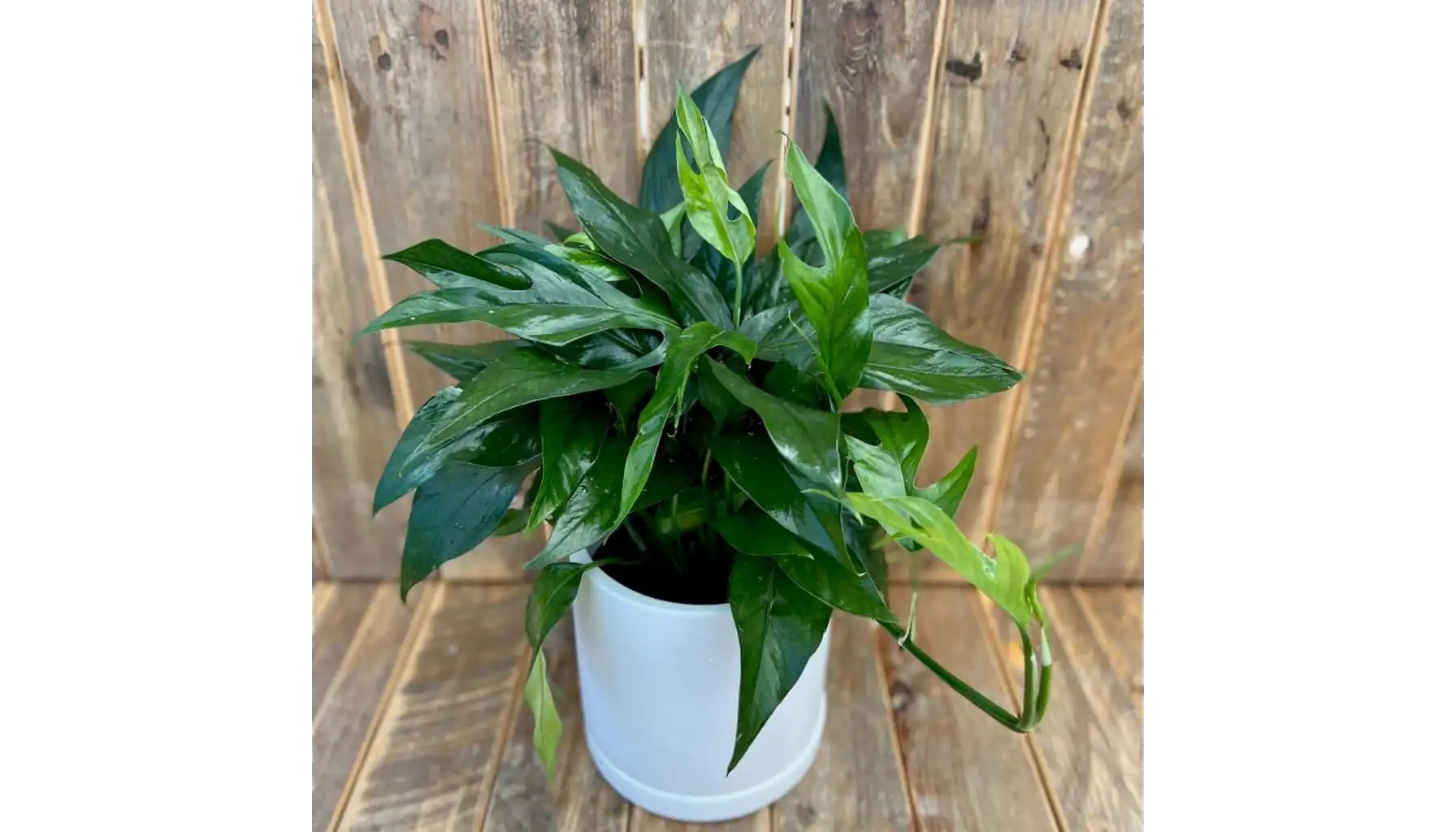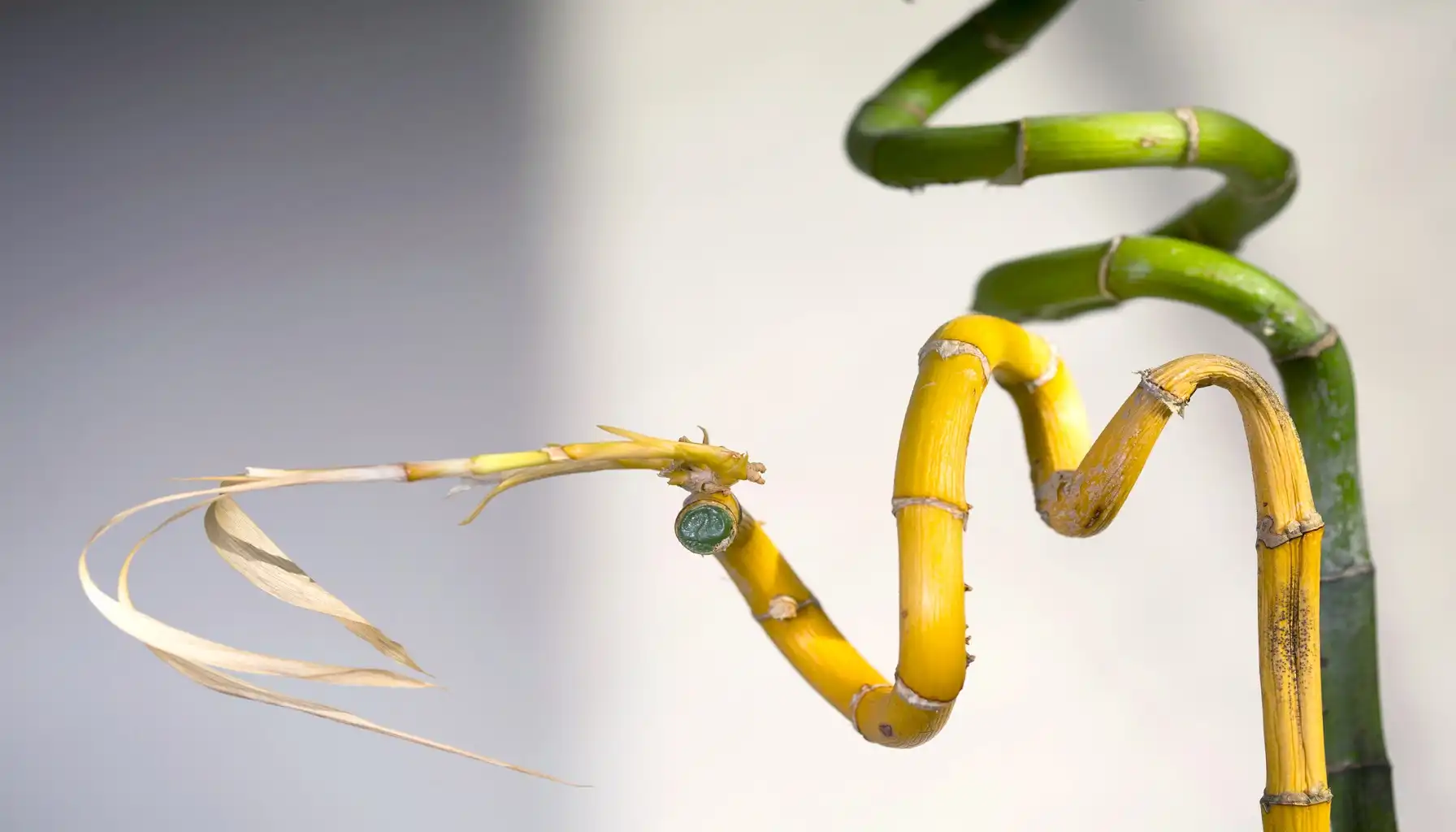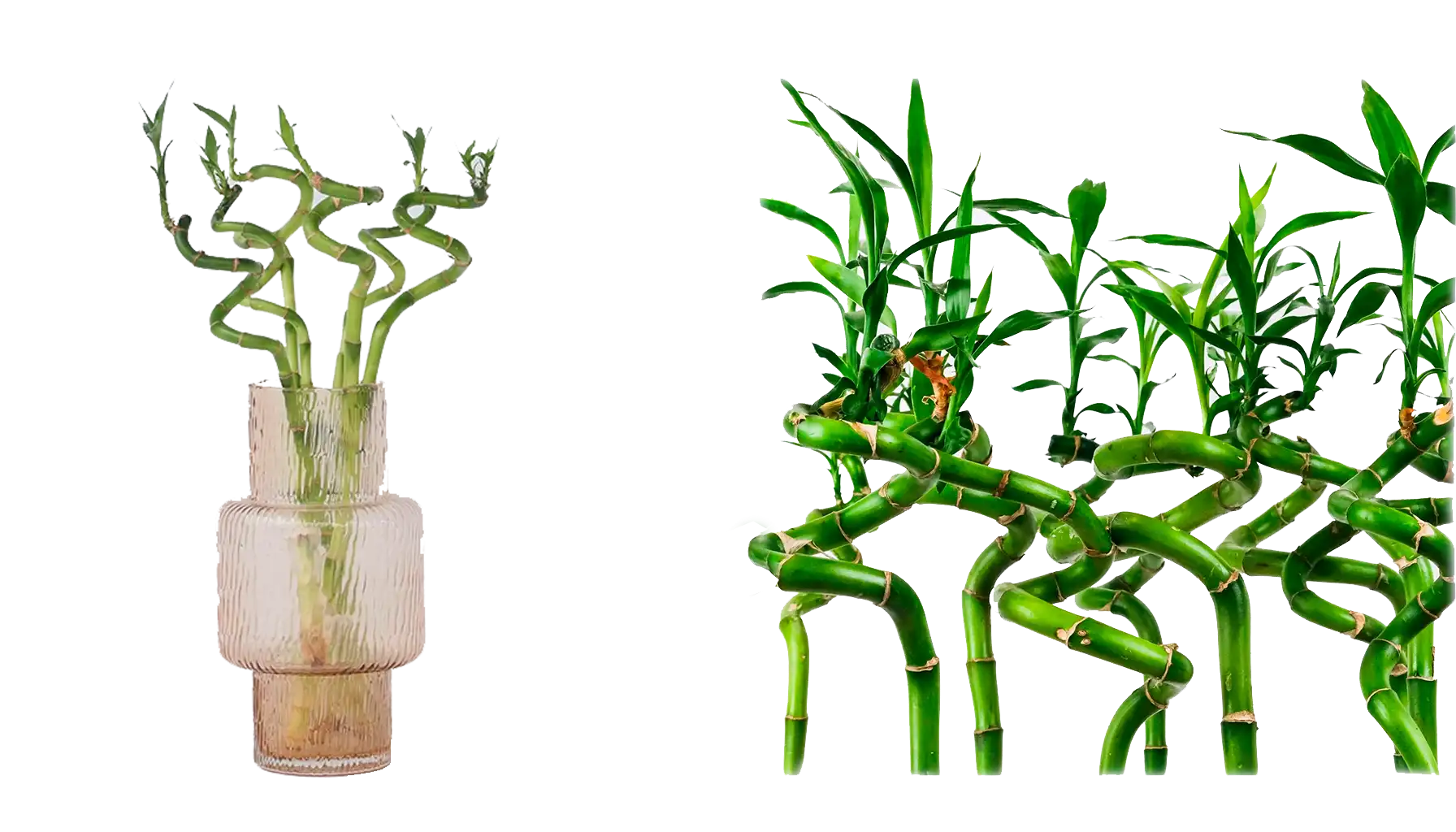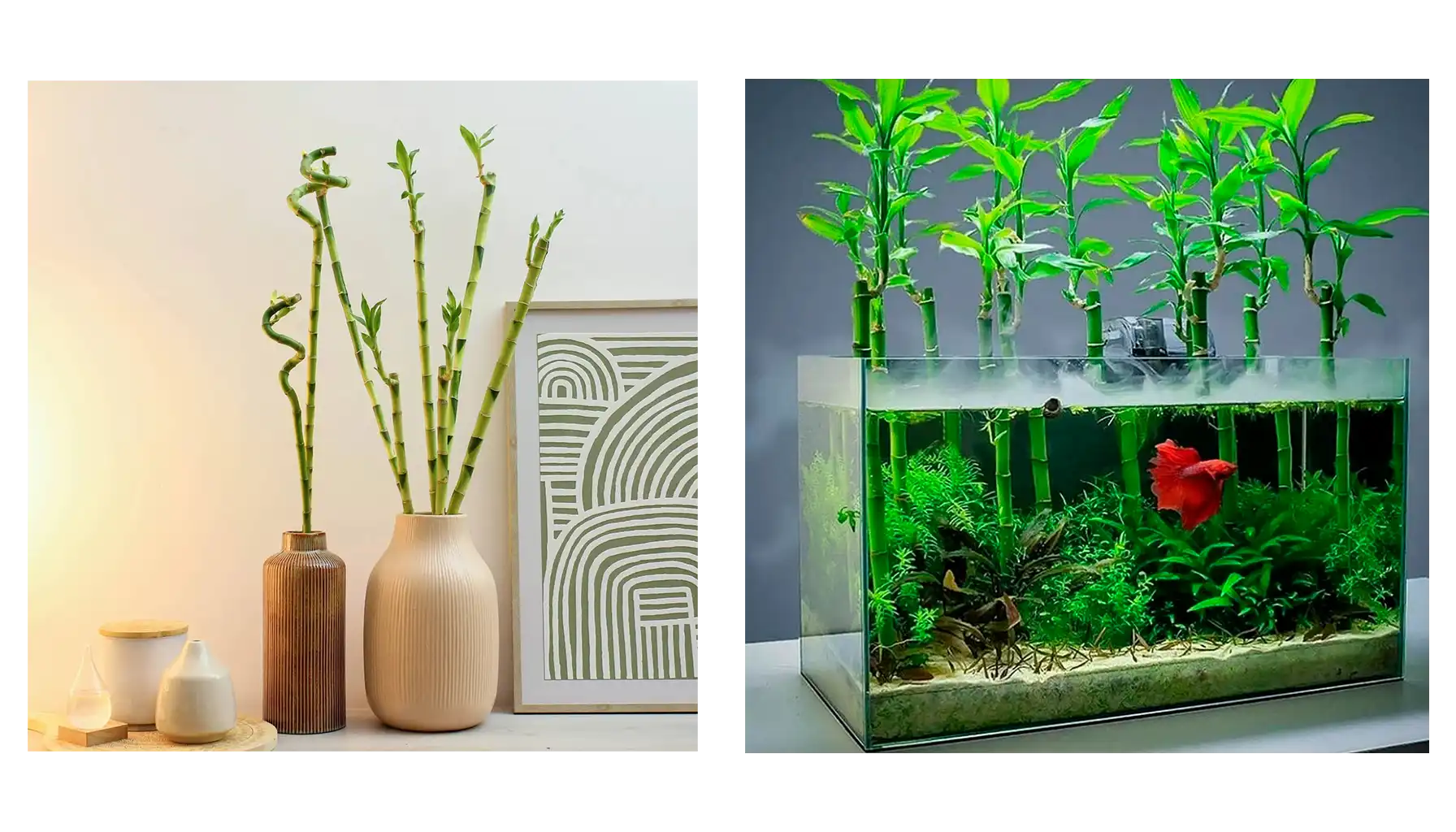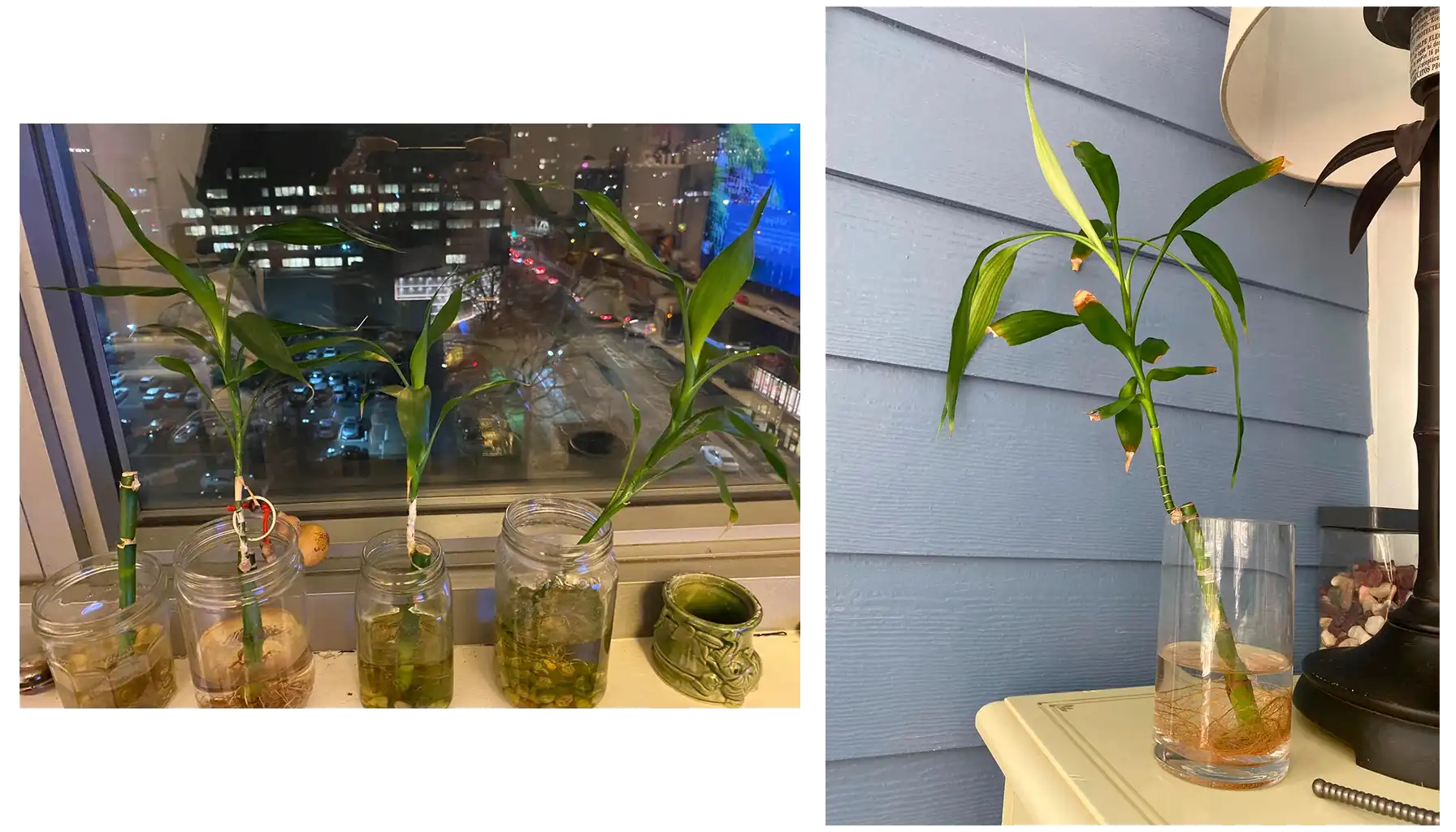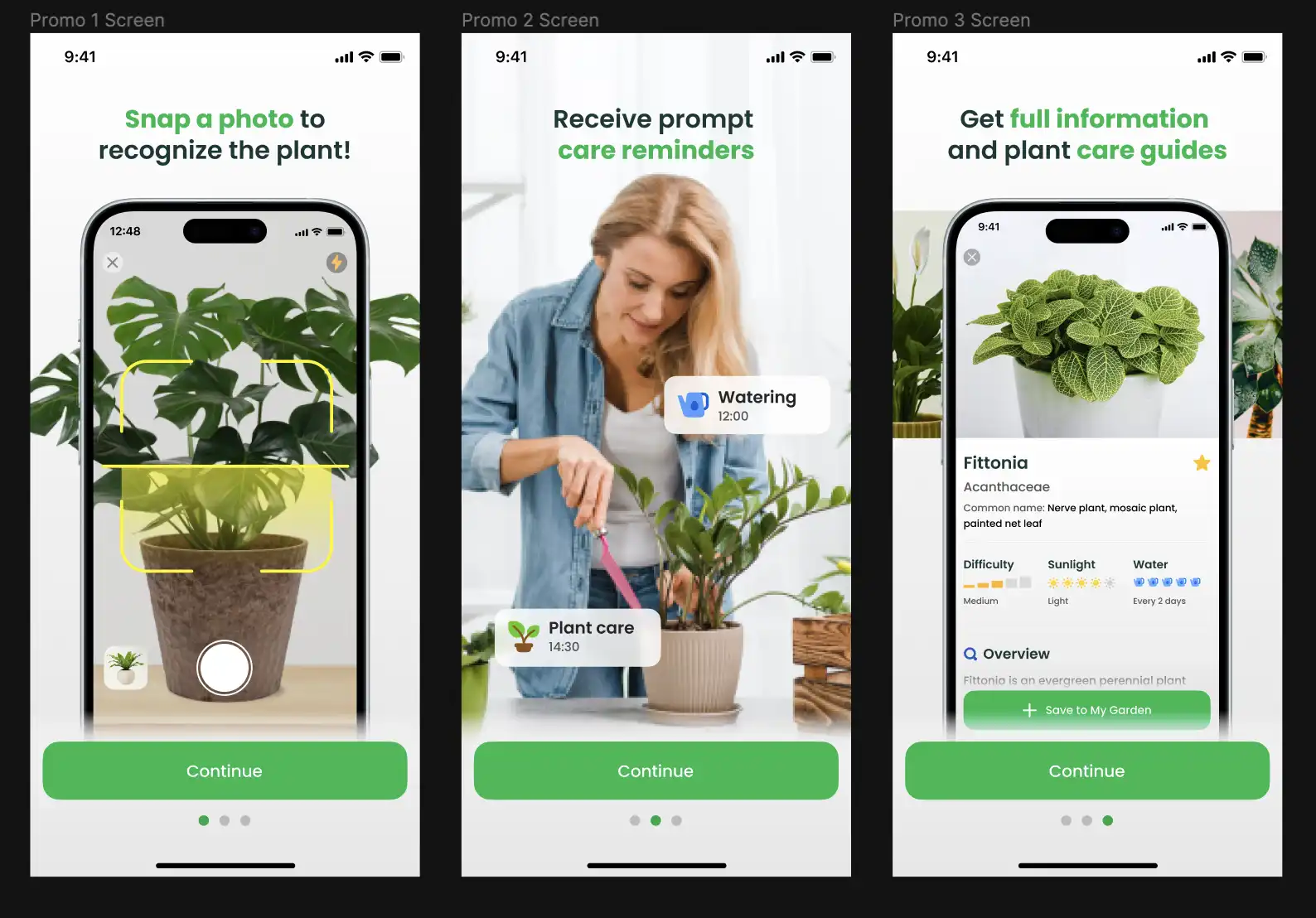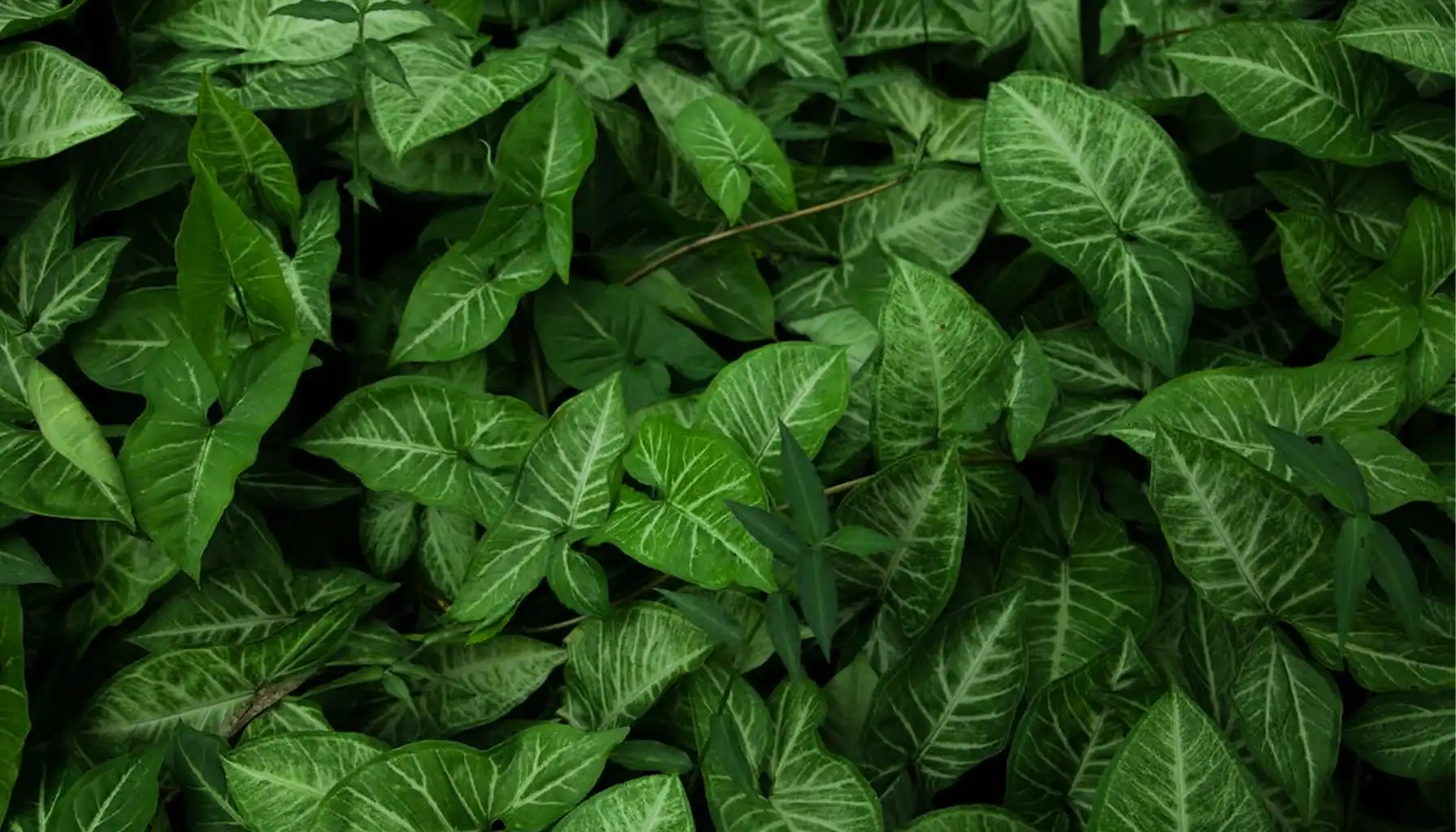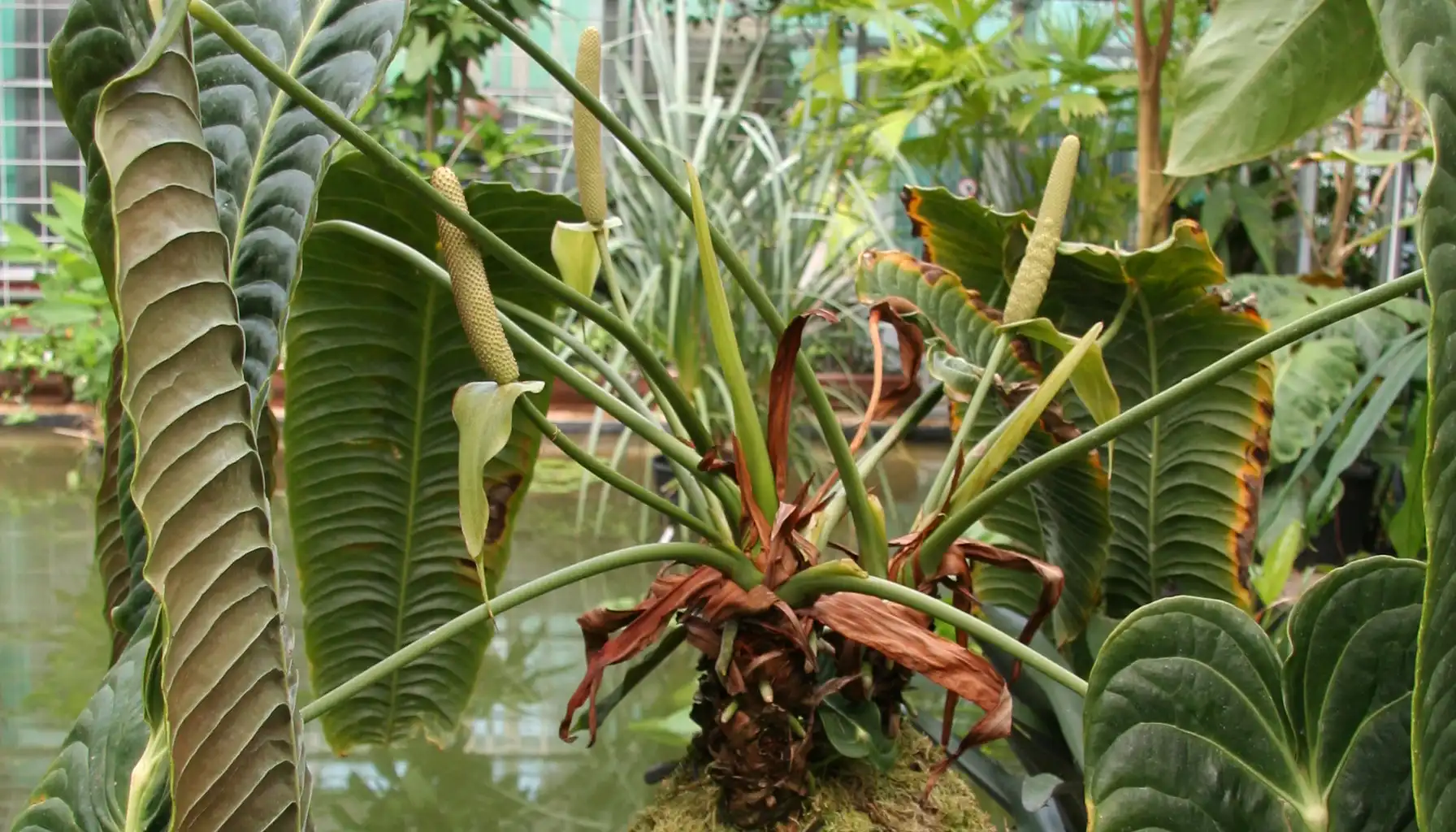.There’s your common bamboo you know from China, and here’s Lucky bamboo that’s not even actually a bamboo! A very unique plant with a unique care routine.
How to care for Lucky bamboo? Learn in this article! Propagation guide, plus safety info included.
Did you know there’s a plant identifier for your phone? You download it, and it can recognize almost any flora for you.
What Is Lucky Bamboo
The scientific name of this plant is Dracaena sanderiana, and it is not actually bamboo. It’s a tropical plant native to Central Africa and part of the Dracaena genus, more closely related to corn plants than real bamboo.
Lucky bamboo meaning in Chinese cultures it symbolizes luck, prosperity, and good energy, hence the name “Lucky”. There’s even a Lucky bamboo Alamosa based restaurant, celebrating Chinese cuisine and fortune. Still, again, the plant is not from China, but Africa.
Overview |
Feature | Details |
Origin | Central Africa |
Type | Tropical evergreen |
Size | 100 cm (39 inches) outdoors. Indoors, the size can easily be changed with trimming |
Life span | Lucky bamboo in water can live for 1–2 years |
Leaf Colors | Green and long |
Flowers | Big and pale, but rarely seen on indoor examples |
Propagation | Done by stem cuttings |
Toxicity | Yes, mildly toxic to cats and dogs if ingested |
Special Features | Grow fast, can live in very moist ground |
Fun fact: there’s a LEGO lucky bamboo. Yes, many things featured on LEGO sets, but lucky bamboo LEGO is a centerpiece. Just a plastic version of this flora that you can keep at home.
Lucky Bamboo Plant Care
Some flora species are resilient, and some are not. When it comes to this bamboo, it is quite tough, but it requires a plant arrangement a bit different from your common. How to take care of lucky bamboo? Let’s see.
Light
Does lucky bamboo need sun? Yes, but only moderately. This bamboo grows best in bright, indirect light. Avoid placing it in direct sunlight, as this can burn the leaves. Originally, this flora grew in rainforests, that’s why it likes a bit of shade.
Lucky bamboo light requirements are not picky. The bamboo can tolerate low light conditions, but growth will be slower and less vibrant.
Watering
This plant best grows in water (though you can still put its roots underground). Use distilled, filtered, or rainwater. Tap water with chlorine or fluoride can harm the plant and cause yellowing leaves.
How often do you water this bamboo? If you grow it in water, change the water every 7 to 10 days. If it grows in soil, water it so that the soil is moist (but not soggy).
Soil
How to grow lucky bamboo? You can grow it in water (the roots are under ground, but most of the stem is submerged) and in soil.
If you choose soil, then it’s better to find loose soil with good drainage.
Pots / Vessels
You can plant this flora in pots. They are not picky when it comes to the material, ceramics or glass, but because their roots don’t grow too deep, it’s better to use something small, to keep them “snug”.
More interestingly, you can have a Bamboo aquarium. This flora grows excellently when submerged, but keep in mind that the upper parts like leaves should be above water. Lucky bamboo in the aquarium looks stunning, and serves as an ornamental plant.
Temperature
It prefers warm temperatures between 65 and 85 degrees Fahrenheit (18 to 30 degrees Celsius). Keep it away from cold drafts, air conditioners, and heaters.
This flora thrives in moderate to high humidity. If your indoor air is very dry, lightly mist the leaves occasionally.
Fertilizing
Fertilize this flora sparingly. After all, it came from a resilient wild line.
Use a very diluted liquid houseplant fertilizer once every 2 to 3 months, if you want tto help it grow.
If the plant is growing in water, fertilize even less frequently,once every 3 to 4 months.Over-fertilizing can lead to yellowing leaves and rotting roots, just like overwatering.
If you look for a good Lucky bamboo fertilizer, look for fertilizers for aquarium plants. After all, it can be an aquatic plant.
How to Propagate Lucky Bamboo
Vegetative propagation sounds like a complicated process that only scientists can recreate, but in reality it’s very simple. Lucky bamboo propagation involves cutting a part of this flora and planting it. Later this small cut part becomes another living specimen.
Choose a Healthy Parent Plant.
Select a stalk that is green, healthy, and has several leaf nodes (the raised rings along the stem).
Make the Cutting.
Use clean, sharp scissors or shears to cut the stalk just above a node (the joint where a leaf grows).
You should cut them at least 4–6 inches (10–15 cm) long with 1–2 nodes.
Remove Lower Leaves.
If there are any leaves near the base of the cutting, remove them so that part of the stalk can be submerged in water.
Place in Water.
Put the cutting in a container filled with distilled or filtered water. Ensure that at least one node (but not the entire stalk) is submerged.
Provide Proper Conditions.
Place the container in a spot with bright, indirect light. Change the water every 5–7 days to keep it clean and oxygenated.
Wait for Roots.
After propagating lucky bamboo, the roots start forming in 1–3 weeks.
Once roots are a few inches long, the new plant can continue growing in water or be transferred to soil.
Why Is My Lucky Bamboo Turning Yellow
Though this flora is resilient, it cannot escape one problem most plants suffer from. Yellowing. Yellow may mean nutrition on vegetables, but not on leaves or stems.
These factors may have lead to a yellow unhealthy Lucky bamboo:
1. Poor Water Quality
Tap water often contains chlorine, fluoride, or salts, which are toxic to most flora species. It’s better to switch to distilled, filtered, or rainwater.
If you have no other water choices, let tap water sit out uncovered for 24–48 hours, and chlorine should evaporate.
Change water weekly to keep it fresh and oxygenated.
2. Too Much Direct Sunlight
The flora prefers bright but indirect light. Direct sun can burn the leaves.
Move the plant to a spot with filtered light (e.g., near a curtained window).
3. Over-Fertilizing
This flora barely needs any fertilizing. Fertilizing too often or using a strong formula can lead to a buildup of salts.
Stop fertilizing and flush the water or soil with clean, distilled water.
Lucky Bamboo Benefits
Benefit Category | Description |
Air Purification | Helps remove indoor toxins (like other Dracaena plants),improves air quality |
Low Maintenance | Grows in water or soil, needs little light and minimal care |
Decorative Value | Attractive appearance, fits in homes, offices, desks, and small spaces. Can be placed in an aquarium |
Stress Reduction | Adds greenery, which can calm the mind and improve focus and mood |
Eco-Friendly Growth | Grows without heavy chemicals, easy to propagate |
Gift Potential | Popular symbolic gift for housewarmings, business openings, and special events |
All in all, these bamboos behave like succulents. Low maintenance, but beautiful, and even has spiritual meaning accorditng to Chinese culture.
Pet / Human Safety
Is lucky bamboo toxic to cats and other animals? What about people?
Yes, it is toxic to animals. The plant contains saponins, natural chemicals found in many Dracaena species, which are mildly to moderately toxic to animals when chewed or ingested.
It’s not a deadly dangerous poisonous plant, but keep these bamboos out of reach of pets, especially cats, who are more likely to nibble on leaves.
AI Plant Finder
Flora is everywhere. Around you, under you, and sometimes even above you. AI Plant Finder knows exactly what flora surrounds you daily.
AI Plant Finder is an app for flora identification by photo using AI. It has accuracy of around 97% for species recognition and up to 98% for disease diagnosis. Yes, the platform can even recognize the disease and provide care tips.
If you are curious about the world around you or want to manage your garden better than ever, then the AI Plant Finder is for you.
The app is free to download on iOS and Android devices.
AI Plant Finder Related Posts:
